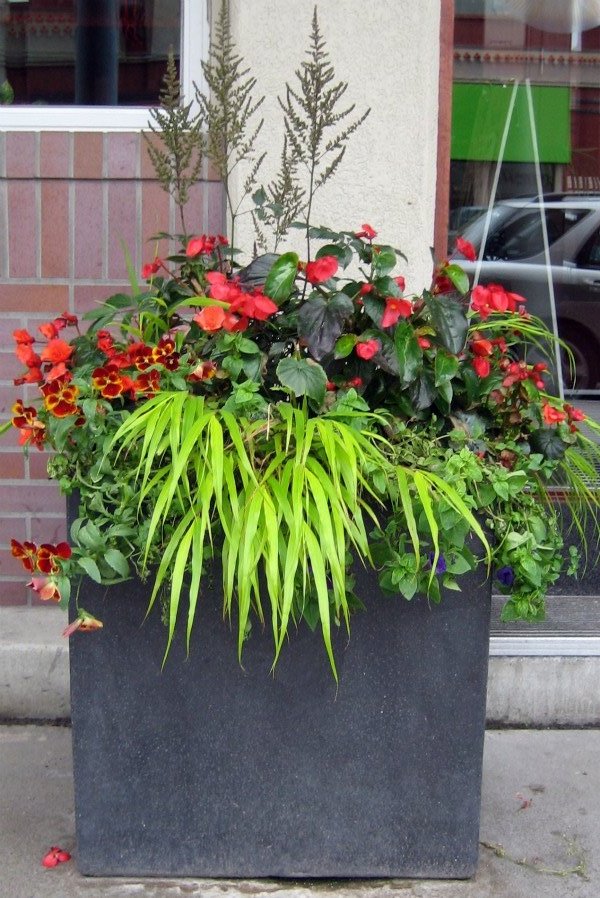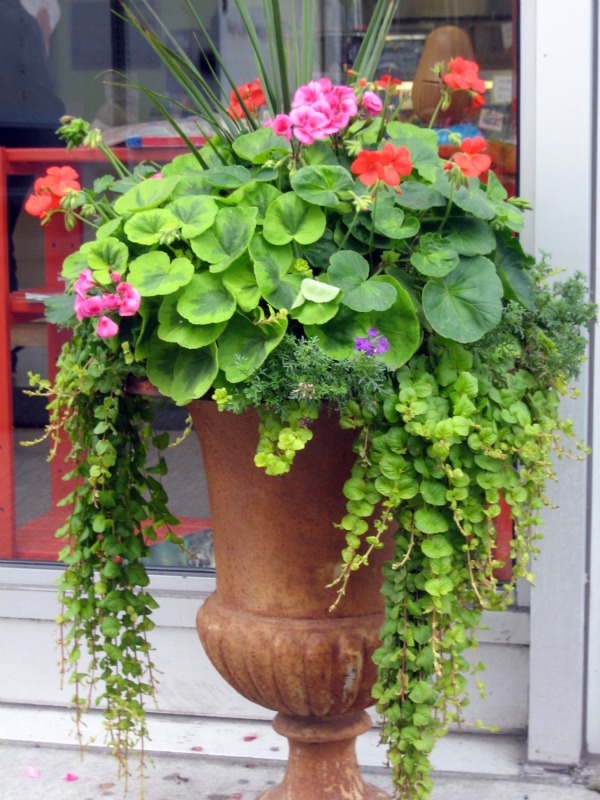Last summer I was invited to help with the planter design process at work. While attempting to put together fabulous container gardens for our clients I gleaned several handy tips from our design manager, many of which I'll pass along in this post:
1. Mix it up.
A basket full of one kind of flower is pretty. A basket full of tastefully selected flowers of different shapes and colors combined with interesting foliage and textures can be breathtaking.
 |
| Pansies, begonias, astilbe, petunias, and Japanese hakone grass. Photo courtesy of Green Connection. |
2. Mix it up...but not too much.
While variety is the spice of life, it's important to keep things unified so they don't appear chaotic and disorganized. This can be done by repeating some elements, like texture or color, throughout the design. In the picture below several colors are unified by the repeated use of daisy-like blooms.
 |
| A symphony of daisies. Photo courtesy of Green Connection. |
 |
| Dracaena spike, two pelargonium varieties, verbena, and lysimachia. Photo courtesy of Green Connection. |
Because nothing looks stoopider than a little tiny plant in a ginormous container, or vice verse. Most flowers come in several different flavors, so be sure to read plant tags and seed packages closely for size information.
 |
| Begonias, calibrachoa, and lysimachia. Photo courtesy of Green Connection. |
4. Choose the right plants for the right place
No matter how lovely your design is, the finished product won't look good if you use plants that don't grow well in your specific area. Is the site shady? Windy? Cool and moist? Hot and dry? For lush and vibrant plants, match the type of plants to the surrounding environment. Here in Alaska it's best to stick with cool-season plants. Lucky for us, there are a lot of annuals that do well up here.
 |
| Dogwood, scented geranium, dahlia, snapdragons, osteospermum, and petunias. Photo courtesy of Green Connection. |
 |
| Osteospermum, bacopa, and helichrysum. Photo courtesy of Green Connection. |
The most important thing to remember when designing a container garden is to have fun! Don't feel like you have to stick to what's currently featured on HGTV. So what if some people don't care for pink and orange together? If you like it, do it. (I personally love hot pink and tangerine together.) The best part about garden design is coming up with something that is uniquely yours and then being able to share it with others.
 |
| Sambucus, ageranthemum, pelargonium, calibrachoa, and lysimachia. Photo courtesy of Green Connection. |
Well, guests and loyal readers, do you have any tips to share on container garden design? Plant combinations you find particularly pleasing? Creative uses for a specific type of container or flower? Let us know! Share your knowledge! We'd love to hear your ideas!